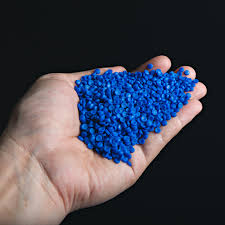Understanding Thermoplastic Elastomers (TPE) categories and applications is essential for engineers, designers, and manufacturers who seek materials that deliver both performance and versatility. In this guide, we dive deep into the distinctive world of non-polyolefinic TPEs, highlighting their major classifications and how they serve in diverse industries with their unique characteristics.
Polyurethane-Based TPEs: A Distinct TPE Category
Our exploration starts with polyurethane-based TPEs (TPUs), one of the most prominent categories of thermoplastic elastomers. These materials were previously discussed in our segment on different TPU types. Their high flexibility, chemical resistance, and elasticity make them ideal for use in medical devices, footwear, and precision engineering.
Polyamide-Based TPEs (TPAs): Critical for Automotive and Industrial Uses
Next, we examine TPAs (Thermoplastic Polyamides), another key segment within the TPE categories. These materials are commonly used in automotive and industrial components due to their superior thermal and mechanical properties. TPAs come in three main subcategories, each designed for a specific performance requirement:
- TPA-EE: Contains ether and ester bonds in the soft segment.
- TPA-ES: Features a polyester-based soft segment.
- TPA-ET: Built on a polyether soft segment structure.
Thermoplastic Copolyesters (TPCs): Specialized TPEs for Automotive Innovation
We then turn to TPCs (Thermoplastic Copolyesters), known for their application in specialized automotive parts. TPCs offer excellent dimensional stability and fatigue resistance, and like TPAs, they are classified by their soft segment composition:
- TPC-EE: Includes both ester and ether in its structure.
- TPC-ES: Utilizes a polyester-based soft segment.
- TPC-ET: Based on a polyether soft segment.
Styrenic TPEs (TPSs): A Widely Used TPE Category Across Industries
Further along our journey into Thermoplastic Elastomers (TPE) categories and applications, we reach TPSs (Styrenic Block Copolymers)—the most versatile class of TPEs. TPSs are extensively used in consumer goods, automotive interiors, electronics, and adhesives due to their easy processability and tunable hardness. These are broken down by molecular structure into:
- TPS-SBS: Styrene-butadiene-styrene block copolymer.
- TPS-SEBS: Made of styrene-ethylene-butylene-styrene.
- TPS-SEPS: Includes styrene-ethylene-propylene-styrene.
- TPS-SIS: Composed of styrene-isoprene-styrene.
Choosing the Right TPE Grade Based on Application
In conclusion, selecting the appropriate TPE grade depends heavily on understanding the specific needs of the application. Whether your priorities are flexibility, thermal resistance, chemical durability, or cost-effectiveness, there is a TPE formulation tailored to those demands. This knowledge ensures the right material is matched with the right use case for peak performance.
🔗 For more on advanced material solutions and engineering-grade polymers, visit our homepage at https://and-dmcc.com

